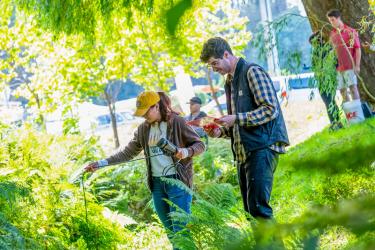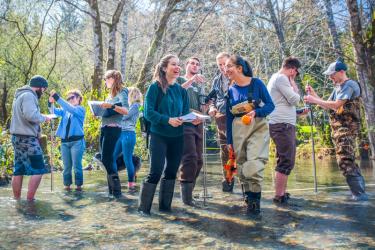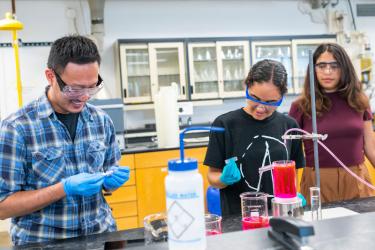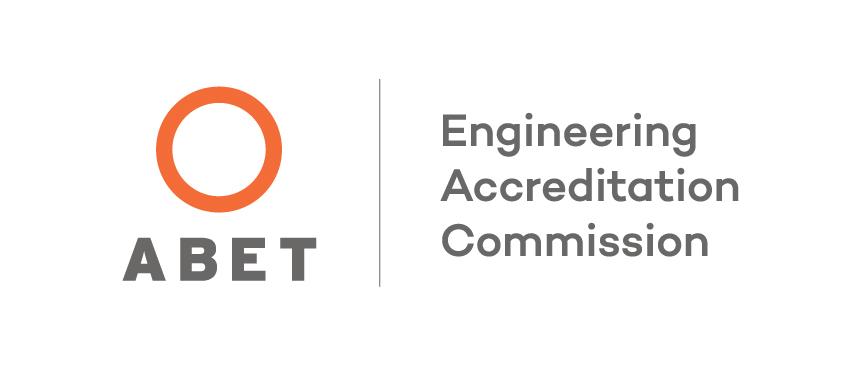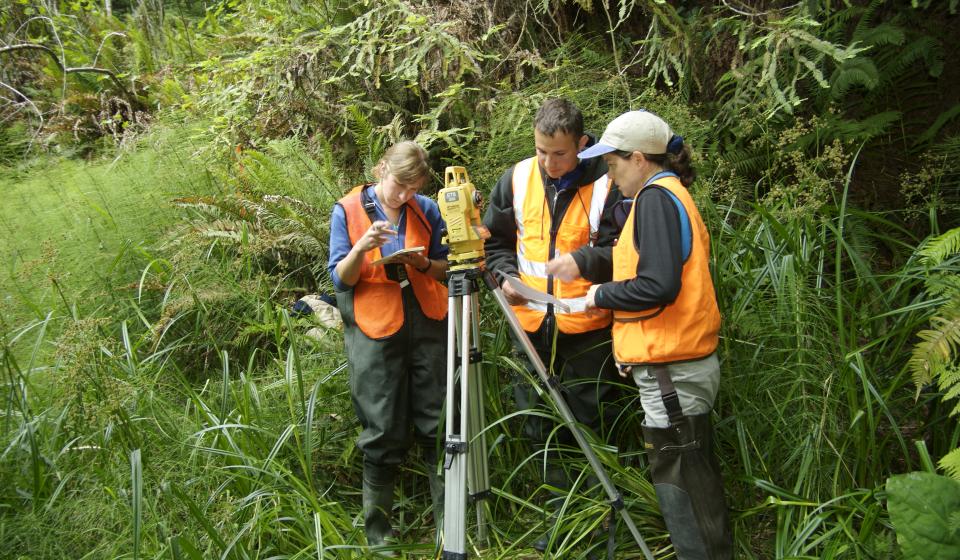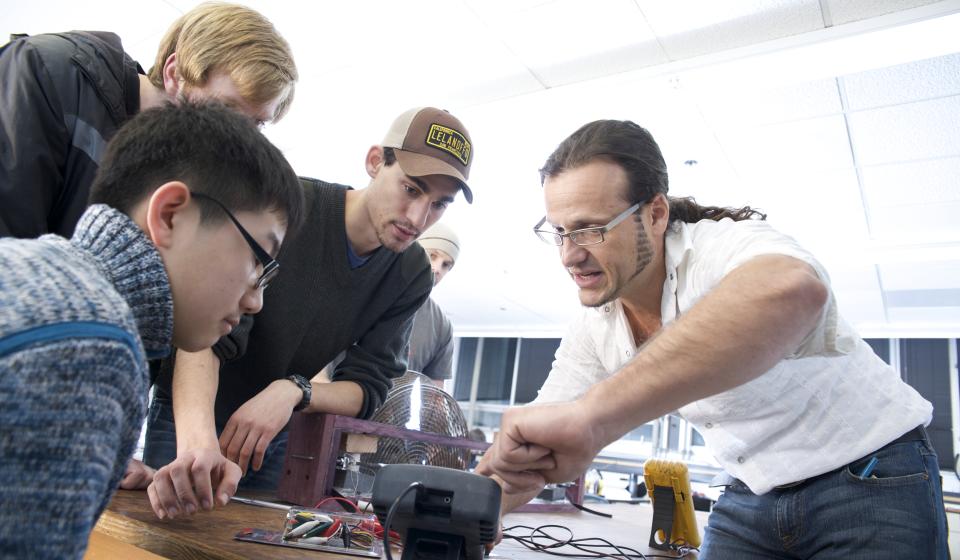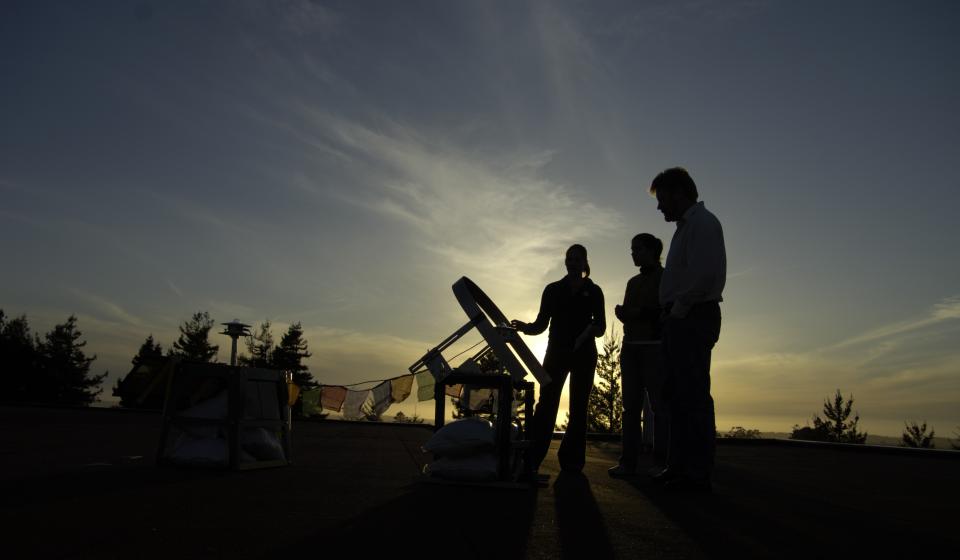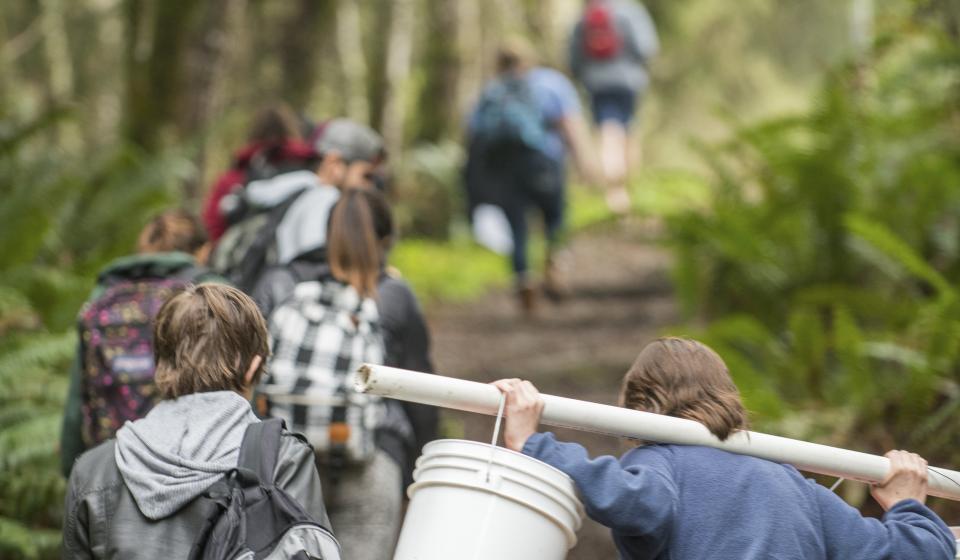Program History
The ERE department offers one of the oldest and largest environmental engineering programs in the nation. The transition from a traditional civil engineering curriculum involved many twists and turns. The history of the department illustrates the perseverance required to make lasting environmental impacts. ERE students from a wide range of backgrounds benefit today from the efforts of those who founded the program.
The Humboldt Office of Institutional Research and Planning provides regular updates of student statistics and success. The reports linked below provide:
History
Birth of the Environmental Resources Engineering Department
You may wonder why the Environmental Resources Engineering (ERE) department at Humboldt has the word 'Resources' in its name? The answer, in part, lies in the history of the program.
The first program in engineering at Humboldt was developed in the late 1930's. It incorporated mathematics, surveying and drafting and provided much the same function a two-year community college pre-engineering program does today. The first instructor was Homer Arnold, a true man of letters, who also taught courses in education, philosophy and psychology. The next faculty member was Jim Roscoe who attended Humboldt as an engineering student and joined the faculty in 1957. Jim had the primary responsibility for developing the two-year Engineering program into a four-year Civil Engineering (CE) program; this new CE program was approved 1960. An Engineering Science (ES) program was added later. Roland Jepson, Bill Schenler, Prabhaker Jog, and Loren Anderson, all Civil Engineers, and Howard Kelly, a Physicist, were all brought into the growing CE and ES programs during the 1960's.
In 1968 the state commissioned Dean Terman of Stanford University to conduct a state-wide study of CSU engineering programs to determine the minimum number of graduates per year for an engineering program to be both technically and economically viable. At that time Humboldt was graduating approximately 10 Civil Engineers a year and was one of three CSU campuses identified in the Terman Report as candidates for elimination of engineering programs (the other two were CSU Chico and SFSU). However, Terman also stated in his report that Humboldt was in a position, based on its excellent programs in Natural Resources, to develop a unique engineering program focusing on natural resource issues.
At roughly this same time, in response to a growing societal and professional awareness, sanitary engineering was starting to split off from Civil Engineering programs. However, these early environmental engineering programs often suffered from one of two substantial drawbacks. Many of those that remained adjunct to Civil Engineering were really still Civil Engineering with just a few courses in sanitary engineering. Many of those that actually split off as independent programs were really science(especially chemistry) programs with a few engineering courses, and these were not considered "real" engineering programs by traditional university engineering faculty or by industry. So, the idea of a new, rigorous program strong in both engineering and natural resources had some appeal for both Humboldt and CSU administrators.
A committee with members from engineering and natural resources, chaired by Whitney Buck, Dean of Undergraduate Studies, and with plenty of politics and frustration to go around, developed the first draft of the new program, originally titled Natural Resources Engineering. Milo Bell, Professor of Fisheries Engineering at the University of Washington, was hired to review the draft and suggest improvements. After more hard work, politics and frustration, the new program was approved in 1969 and was titled simply Engineering. It resided in the College of Science, which at the time was separate from the College of Natural Resources. In 1972 the program was retitled Environmental Resources Engineering (ERE). This first ERE program incorporated required course work primarily in mathematics, chemistry, physics and engineering, with approved elective course work in natural resources, engineering, science and related fields. One course emphasizing engineering design was highly recommended. Water resources engineering, ocean engineering, geological engineering and other natural resources or environmental oriented areas were listed as possible student interest areas.
Development of the ERE Program
The first significant program change came in 1977 when a 15-unit Major Emphasis Program was introduced as a degree requirement. Each student developed a coherent group of courses that was environmentally oriented and required three courses emphasizing principles of engineering analysis and design. The early form of the Major Emphasis Program had eight major emphasis areas, but these were soon reduced to a more manageable six: water quality, air quality, water resources, geotechnical, ocean resources and energy resources.
By 1980 the ERE faculty was multidisciplinary and involved in a wide range of local, regional, national, and international resource management and environmental protection issues. In 1981 ERE became the sixth undergraduate environmental engineering programs in the U.S. accredited by the Engineering Accreditation Commission of ABET.
However, it was becoming clear that the program was too narrowly focused for an undergraduate program, and that a core group of environmental engineering courses should be required. In 1992 the major emphasis program was eliminated and replaced by a requirement that all students take introductory engineering course work related to air, water, land and energy issues. This developed into the current program that requires courses in environmental monitoring, system analysis, environmental impact assessment, public health and water quality engineering, and transport phenomena. Elective design classes in building energy analysis, groundwater, environmental geotechnology, water quality analysis, water resource management, etc. are courses often found at the graduate level in environmental engineering. There remains today a compelling need to produce interdisciplinary and multidisciplinary engineers to assist in sustainable development that is resource wise and leaves only traces of a footprint.
The program is one of approximately 50 undergraduate programs in the nation accredited by ABET under Environmental Engineering criteria.
Evolution of the ERE faculty
| Year | Professor (* indicates Emeritus) |
Areas of Expertise |
|---|---|---|
| 1971-2003 | Al Burrows | Ocean/River Engineering |
| 1973-2011 | Mike Anderson * | Air Quality/Mechanical Engineering |
| 1975-2003 | Bob Gearheart* | Biology/Water and Wastewater Engineering |
| 1977-2014 | Robert Willis* | Operations Research/Water Resources Engineering |
| 1979-2017 | Peter Lehman | Chemistry/Alternative Energy Engineering |
| 1979-Present | Brad Finney | Water Quality/Water Resources Engineering |
| 1979-1982 | Wen-Sen Chu | Bay and Estuary Modeling |
| 1981-2005 | Ron Chaney* | Soils/Geotechnical Engineering |
| 1983-2015 | Charles Chamberlin* | Environmental Microbiology/Public Health Engineering |
| 1983-1985 | Jerry Jackson | Water Quality/Treatment Plant Operation |
| 1983-1986 | Anil Mitra | Physics/Mechanical Engineering |
| 1984-1998 | Mac McKee | Water Resources/Hydraulic Engineering |
| 1994-Present | Margaret Lang | Water Quality/Water Resources Engineering |
| 1995-Present | Beth Eschenbach | Water Resources/Engineering Education |
| 2000-Present | Eileen Cashman | River Morphology/Sediment Transport |
| 2000-2004 | Derek Baker | Instructional Media Development |
| 2005-2010 | Dustin Poppendieck | Indoor Air Quality |
| 2005-Present | Arne Jacobson | Energy Policy/Renewable Energy |
| 2011-2015 | David Vernon | Energy Efficiency/Thermal Systems |
| 2012-2017 | Andrea Achilli | Membrane Separations in Environmental Applications |
| 2015-2017 | Kerri Hickenbottom | Water Quality and Environmental Health |
| 2016-Present | Peter Alstone | Distributed Energy Systems/Economics |
| 2016-Present | Liza Boyle | Air Quality/Solar Energy |
| 2017-Present | Ali Moradi | Renewable Energy Storage Systems |
| 2017-Present | Sintana Vergara | Composting & Other Organic Waste Treatment Processes |
| 2017-Present | Margarita Otero-Diaz | Environmental Chemistry/Environmental Soil Physics |
How to Apply
So environmental resources engineering sounds interesting, but you are still not sure if Humboldt is right for you? Explore what Humboldt has to offer to both freshman and transfer students.
Paperwork
For paperwork and forms such as major and minor contracts, course planning guides, semester schedules, course rotations, office hours and more, visit our forms page!


